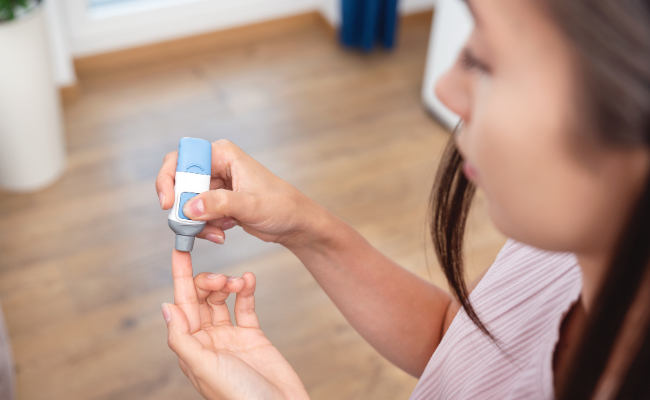How to Treat Low Blood Sugar (hypoglycaemia)?
- October 28, 2023
- No Comments

What is Low Blood Sugar (Hypoglycemia)?
Low blood sugar, or hypoglycemia, is a medical state characterized by an unusually low level of glucose in the bloodstream, which is a vital energy source, especially for the brain. When blood sugar levels fall below the norm, it can trigger various symptoms and, in severe instances, may lead to unconsciousness.
This condition is prevalent in individuals with diabetes, notably those with Type 1 diabetes. In the diabetes context, hypoglycemia is typically defined as having a blood sugar level below 70 milligrams per deciliter (mg/dL) or 3.9 millimoles per liter (mmol/L). Given its frequent occurrence in diabetic individuals, a comprehensive understanding and effective management of this condition are crucial.
Why is Treating Low Blood Sugar Important?
Treating low blood sugar is crucial because the brain relies on glucose for energy. When blood sugar levels plummet, the brain may not receive an adequate fuel supply, leading to a range of symptoms. Mild to moderate symptoms of hypoglycemia include shakiness, sweating, irritability, confusion, and dizziness. In severe cases, untreated hypoglycemia can result in seizures, loss of consciousness, or even coma. Therefore, prompt and appropriate treatment is essential to prevent potential complications and maintain overall health.
How to Treat Low Blood Sugar?
The immediate goal when facing low blood sugar is to raise glucose levels to a safe range. Here's a step-by-step guide on how to treat low blood sugar:
- Consume Fast-Acting Carbohydrates: Ingest 15 to 20 grams of fast-acting carbohydrates. This could be achieved by consuming glucose tablets, fruit juice, regular soda (not diet), honey, or candies.After consuming the carbohydrates, wait for about 15 minutes, then recheck your blood sugar levels. If they haven't risen to a safe range (usually 70 mg/dL or higher), repeat the process.
- Pair Carbohydrates with Protein: After blood sugar stabilizes, it's advisable to consume a snack or meal that includes both carbohydrates and protein. This combination helps prevent another drop in blood sugar.
- Glucagon Injection: In severe cases where the person with low blood sugar is unable to eat or drink, a glucagon injection may be administered. Glucagon is a hormone that raises blood sugar levels.
- Regular Monitoring: Regularly monitor blood sugar levels, especially if you are prone to hypoglycemia. This helps in identifying patterns and adjusting medications or lifestyle factors accordingly.
Treatment Solutions for Low Blood Sugar:
- Carrying Glucose Sources: Individuals who are prone to hypoglycemia should always carry a source of fast-acting glucose, such as glucose tablets or a small bottle of juice. This preparedness ensures quick access to necessary treatment.
- Continuous Glucose Monitoring (CGM): For those with diabetes, using a continuous glucose monitoring system can provide real-time information about blood sugar levels. This proactive approach to monitoring allows for timely intervention and management.
- Medication Adjustment: If low blood sugar is a recurrent issue, consult with a healthcare professional to evaluate and adjust medications or insulin dosage as needed. Regular medical check-ups are crucial for effective management.
- Balanced Meals and Snacks: Maintaining a balanced diet with regular meals and snacks can help prevent sudden drops in blood sugar levels. Consistency in dietary habits plays a significant role in managing blood sugar.
Benefits of Treating Low Blood Sugar:
- Prevention of Complications: One of the primary benefits of prompt treatment is the prevention of complications associated with low blood sugar. Timely intervention reduces the risk of severe outcomes such as loss of consciousness, seizures, or long-term neurological damage.
- Enhanced Cognitive Function: Restoring blood sugar levels to normal quickly ensures that the brain receives the energy it needs. This prevents symptoms like confusion and dizziness, contributing to improved cognitive function.
- Avoidance of Emergency Situations: Timely intervention prevents the progression of hypoglycemia to a medical emergency. Quick and appropriate treatment reduces the risk of severe outcomes, ensuring the individual's safety.
- Improved Quality of Life: Managing low blood sugar effectively allows individuals with diabetes or other conditions to lead a more stable and comfortable life. The regularity of daily activities is less disrupted by the occurrence of frequent hypoglycemic episodes.
Comments (0)